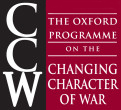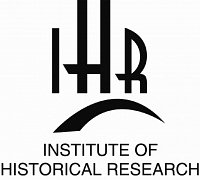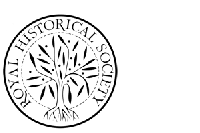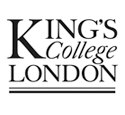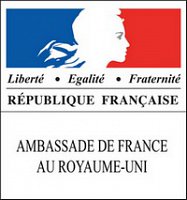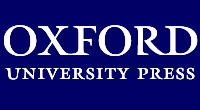The French version of the site is currently undergoing maintenance work and is unavailable.
Conferences
London 2009
Other Combatants, Others Fronts: Competing Histories of the First World War
Thursday, 10 September 2009 to Saturday, 12 September 2009
The 5th Conference of the International Society for First World War Studies, held at the Imperial War Museum, London 10-12 September 2009.
Call for Papers: Other Combatants, Other Fronts: Competing Histories of the First World War
We would like to call your attention to the Fifth Conference of the International Society for First World War Studies, which will take place in association with the Imperial War Museum and War Studies, King’s College, London in September 2009. Since 2001, the International Society for First World War Studies has held successful conferences in Lyon, Oxford, Dublin and Washington DC.
In line with previous conferences the Society seeks emerging and innovative research on all aspects of the First World War. We would encourage applications from a variety of disciplines, including literature, art, archaeology, philosophy and music, as well as from historians.
The historiography of the Western Front from the British, French and German perspectives is well developed. Whilst we welcome the latest research in these veins the conference seeks to juxtapose it with work emphasising less familiar ‘fronts’ – ‘Other Combatants’ and ‘Other Fronts’. In so doing we will expand and enhance our understanding of the truly global nature of this conflict. As with all the Society’s previous conferences a publication based on conference papers is anticipated.
The Society brings together over 200 members from all over the world to enhance the public understanding of the First World War. In the egalitarian spirit of the Society we aim to foster cross-disciplinary exchange and debate between international postgraduate and postdoctoral scholars, along with established senior academics. For more information about the Society please see the website: (www.firstworldwarstudies.org).
Please send abstracts of no more than 500 words, accompanied by a one page CV by 31 January 2009. Following the Society’s commitment to promote the work of young scholars, we are particularly keen to receive proposals from PhD candidates, post-doctoral students and early career researchers. Please be prepared to submit a paper of no more than 8000 words by 1 June 2009. Please note that we welcome papers written in French and German, but ask that the author provide a 1000 word summary in English in addition to their original draft. All papers will be pre-circulated.
- Submission Email Address:
- Call now closed
- Closing Date for Submissions:
- 1 June 2009
Call for Papers Now Closed
Conference team

Laura Rowe
- Institute of Historical Research, London

Michael Finch
- Pembroke College, Oxford

Anurag Jain
- Queen Mary, University of London

James Kitchen
- Balliol College, Oxford

Alisa Miller
- Christ Church College, Oxford
Conference report by Stuart Hallifax, Queens College, Oxford
The 5th Conference of the International Society for First World War Studies:
‘Other Combatants, Other Fronts: Competing Histories of the First World War’
The Imperial War Museum, 10-12 September 2009
Conference Report
For its fifth biennial conference, the International Society for First World War Studies coupled its expansive title with an appropriate venue in London’s Imperial War Museum. The 28 papers presented at the conference inverted the proportion of subjects that an outsider might expect from a gathering of historians studying the Great War, with only one paper directly relating to the Western Front and a small number relating to the British, French, and German Home Fronts. Instead, almost half explored the war and its aftermath as witnessed by other European nations, while others addressed nations across the globe. The majority of papers focused mainly on social and cultural aspects of the war and its legacy.
As in its previous conferences, the Society’s collegiate nature and emphasis on work by doctoral students and early-career historians was much in evidence, with more established academics providing a summary and response to pre-circulated papers. Also in evidence was the Society’s international nature, with only six papers from historians at British universities, 13 from the EU (including a healthy contingent from Trinity College Dublin) and nine from elsewhere in the world. The papers were grouped into themed panels entitled: prisoners of war, legacy, artistic response, neutral countries, military aspects, experience, race, and behind the lines. While the subjects were largely familiar ones to those studying British or western-European experiences of the war, the global scope introduced new avenues for this research by looking at previously un- or under-researched national or regional war experiences. Two roundtable discussions were held during the closing session on both Friday and Saturday, on the subjects of the war’s upcoming centenary and whether history of the war is ‘global’ respectively.
Day One
Before the regular panels of papers began, the Imperial War Museum’s Mark Whitmore gave us a brief history of the museum from its origins in the First World War, through an intensive phase of collecting in the war’s aftermath and relocations before ending up in the former Bethlam or ‘Bedlam’ mental asylum. Simon Robbins of the museum’s Department of Documents charted the growth of their archival holdings from around 300 collections in the 1960s to over 15,500 today, of which around a third relate to 1914-1918, before giving us a taste of his work on the papers of General Lord Horne. Paul Cornish rounded off the museum’s panel with an entertaining, myth-busting presentation on the ‘Myth of the Machine-Gun’, comparing the actual use and deadliness of the weapon with its prominent role in popular memory of the Great War.
To begin the main proceedings, society stalwart John Horne (Trinity College Dublin) responded to a paper by Matthias Egger (Innsbruck) on the attitude of Austria-Hungary towards its soldiers captured by the Russians, some 2.1 million of the war’s total eight million prisoners of war. Serious political and diplomatic work by the dual monarchy and visits by an international group of aristocratic ‘Sisters’ to the camps in Russia made up for the shortcomings of the pre-war Hague conventions’ rulings on the treatment of prisoners. The dual monarchy’s fear of revolutionary spirit being imported from Russia helped make them suspicious and unwelcoming of returning prisoners, in stark contrast to the warm reception given by the new Austrian republic after the war. The papers by Timothy Schroer (West Georgia) and Daniel Steinbach (Trinity College Dublin) investigated the interaction between thoughts on race and the experiences of prisoners of war. Schroer argued that Article 9 of the 1929 Geneva Convention stipulating that prisoners should be divided according to ‘race’ was inspired by the experience of the grouping together of men from different ethnic and national origins during the war, although the two concepts of ‘nationality’ and ‘race’ were not so clear-cut as in the 21st century. Steinbach’s study of internment in East Africa addressed a different but related racial aspect of wartime imprisonment: the perceived degradation of white British citizens being guarded by native Askaris in German East Africa. Their experiences as prisoners contradicted popular conceptions of the ‘gentlemanly’ war fought by Paul von Lettow-Vorbeck and his British counterparts, concepts of European solidarity in Africa and, Steinbach argued, undermined notions of white superiority.
Similarly, the ‘Legacy’ panel contained two related papers, with Mark Jones (European University Institute, Florence) and Julia Eichenberg (Trinity College Dublin) both dealing with paramilitary violence. Jones’s ‘inspiring and thought-provoking’ paper highlighted the impact of Imperial German naval culture, the navy’s failure to achieve a great victory on the high seas, the memory of Skagerrak (Jutland) and the shame of capitulation of the fleet on its officers, many of whom were prominent leaders in the Marine Brigade paramilitary units after the war. Jones emphasized the cultural elements of both this background and the group’s actions. Eichenberg’s comparative work on Polish and Irish paramilitary violence in the years after the war highlighted similarities but also differences between events on the geographical fringes of Europe, extending the war’s period of violence beyond 1918 but finding a more complex picture than George Mosse’s ‘brutalization’ thesis. Diverging from the paramilitary focus, Brigitte Strauss (Innsbruck) traced a different legacy in the wartime and post-war portrayal of the conflict in museums in Italy and, particularly, Austria-Hungary and the Austrian Republic, as well as differences between wartime depictions and those after 1918. This panel prompted a very interesting debate on war memory, paramilitary violence and the nature and existence of war culture(s).
Artistic responses to two very different aspects of war experience were explored in the final panel of the day, with papers from Ann-Marie Einhaus (Durham) and Caroline Lord (Canterbury, New Zealand). Both papers traced wartime depictions within broader themes and developments in distinct styles of representation. Einhaus placed wartime short stories about German spies in Britain in the context of pre-war ideas of what spies and Germans were like (the latter distinguishable by their excessive appetite for sandwiches, it seems) and the development of the spy story genre. Although later superseded by the espionage professional, the amateur spy-catcher provided a way for those at home to picture themselves as potential heroes during the war. In contrast to the continued appeal of ‘The Riddle of the Sands’ and ‘The 39 Steps’, Lord’s New Zealand war artists continue to be excluded from public memory, a legacy of their neglect by the dominion’s authorities for much of the war and the delay in their art reaching home after 1918. The art itself showed both the influence of Paul Nash on artists who trained with him and the ‘fixedly provincial’ style of New Zealand art in the early twentieth century. Here discussion turned again to war culture(s), as well as art as self-mobilisation and the ‘pictorial language’ of the British dominions.
The launch party for the Society’s Journal ‘First World War Studies’, the first issue of which is due for publication in 2010, was held on Thursday evening at the S&M Café in Leadenhall Market and many conference delegates attended. The Café was also the scene of the conference meal, after which a roving street magician entertained several delegates.
Day Two
The ‘Neutral Countries’ panel focused on a relatively recent development in study of the Great War, expanding the picture of the war’s impact and participants beyond belligerent states. As countries surrounded by belligerent nations and empires, the Netherlands and Switzerland are natural subjects of this expansion, but Philip Dehne (St Joseph’s College, New York) showed the impact of the war on South America and of the actions there on global economic strategies. Dehne uses South America as an example of the contrast between German efficiency and the paucity of British organisation, as British attempts to use their economic might failed in the face of German and United States competition. Instead of blocking and capturing German companies’ trade, British businesses failed to understand the complexities of local business and local companies and companies from other countries outperformed them. Papers by Conny Kristel (Netherlands Institute for War Documentation) and Samuel Kruizinga (Amsterdam) showed the impact of the war on Dutch life in 1914 and on Dutch economic policy respectively. Kristel drew on contemporary evidence of Dutch reactions to the war crisis and the German invasion of Belgium to show parallels between the attitudes and responses in this neutral state and in the belligerent ones surrounding it. The similarities were striking, with public self-mobilisation in the Netherlands and a wide variety of opinion on the war and the Dutch position (using Martin Ceadel’s classification of the range from militarist to pacifist), the main difference from Britain and Germany being the lack of the final stage of entry into a war mode. Kruizinga argued that Dutch ‘government by committee’ lacked a proper grip on the economy and that instead Dutch businessmen were shaping both the nation’s economic and neutrality policies, although he and his respondent Johan den Hertog (Leiden) disagreed on the role of minister-president Cort van der Linden and his effectiveness as temporary chair of ministers. Landry Charrier (Université Blaise Pascal) portrayed Switzerland as a front-line country, with its contrasting positions at the centre of Europe but outside its warring alliances. As such, Switzerland was the site for multi-lateral exchanges between belligerent nations, particularly France and Germany; of these he outlined examples of specific actions: an attempt at ‘truth and reconciliation’ that failed in the face of belligerents’ images of the war as being between right and wrong; the actions of dissidents from other countries; and three specific writings by intellectuals. Charrier’s paper brought out fundamental, complex issues surrounding neutrality that resonated across the papers in the panel and prompted an interesting debate on the meaning of neutrality. His respondent, Pierre Purseigle (Birmingham) commented on the difference between legal belligerent status and an attitude of belligerence. John Horne described a ‘tripartite’ idea of neutralities: defensive, seeking to keep one’s country out of the war; interventionist, such as Vatican appeals for peace and Dutch and Swiss humanitarian efforts; and oppositional, in the sense of a pacifist opposition to war.
In keeping with the conference’s focus on unexpected fronts and issues, the military panel brought papers on pre-war and wartime naval relations, the utility of cavalry as a weapon of modern war and the only paper on the Western Front. The latter was Simon House’s (King’s College London) reinterpretation of the failings of the French army in the 1914 Battle of the Frontiers, taking a new look at the legacy of Colonel de Grandmaison, long credited with propounding a disastrous tactic of ‘offensive à outrance’. House showed that Grandmaison’s reputation was based on a mythologized and paraphrased version of his writings rather than the actual text, which showed an awareness of the dangers of all-out attack and addressed operational matters more than tactics. Instead the disastrous attacks were explicable by the failure of junior command, and Grandmaison’s reputation as the father of the ‘cult of the offensive’ is more likely rooted in the army’s need for a scapegoat. Similarly counter to common memory of the war was Kaushik Roy’s (Presidency College, Kolkata) discussion of the Indian Cavalry in Mesopotamia and the Third Afghan War, showing that rather than being a sign of a failure to modernize, the use of cavalry in theatres away from France and Flanders was part of a developing weapons system and was more useful than mechanized weaponry in the deserts of Iraq and the mountains of Afghanistan. Relations between the British and United States navies and in particular the role of US Admiral William S. Sims were the subject of a joint paper presented by Kenneth Hagan and Michael McMaster (US Naval War College). Sims’s declarations of US support for the British in wartime caused great controversy in 1910, but saw him sent to Ireland on the USA’s entry into the war in 1917 to co-ordinate Anglo-American naval actions where he built on his existing relationships with British naval officers and the two navies co-operated with unprecedented closeness.
The ‘Experience’ panel saw subjects which have been well-examined with regard to the major Western Front armies refocused on the armies of south-eastern Europe. Georgia Eglezou (Bournemouth) used some of the few Greek army officers’ memoirs to begin to explore the lives of their soldiers, finding some elements of a universal experience among soldiers (such as a preoccupation with food and the importance of morale and comrades) as well as aspects particular to the Greek experience. The limitations of the evidence base in Greece, deep political divisions in the army and a reliance on officers’ memoirs (in an army with large numbers of illiterate soldiers) makes more in-depth analysis as seen in Britain, France and Germany very difficult. Daniela Schanes’s (Graz) use of the ‘ego-documents’ (memoirs and diaries) of Serbian and Austrian commanders highlighted the utility of them as sources on both the war and as cultural output in themselves – for instance the 1990s revival interest in Serbian commanders compared with the lack of modern interest in Austro-Hungarian commanders. Where Austrian commanders portrayed an army anticipating but not really ready for the war, Serbian documents show their commanders having lived with war as virtually a normal experience but almost indifferent to the identity of their current enemy. The importance of memoirs as cultural documents of the time of their publication was clear also in aspects of the Turkish autobiographical works studied by Philipp Wirtz (School of Oriental and African Studies), which were largely written in English for a post-war British audience in whose consciousness Turkey was then high. Although the memoirs gave a distorted middle- or upper-class bias, there did appear to be a number of commonalities in experience of loss, patriotism, changing roles for women (seen as either a positive or a negative change depending on the author), food shortage and financial decline of the middle class, which also matched experiences in other belligerent states.
The conference’s first Roundtable session announced specific projects commemorating the centenary of the First World War, and discussion of the Society’s wider attitude and actions relating to the public marking of the occasion. John Steinberg (Georgia Southern) presented a project to produce 13 books under the banner ‘Russia’s Great War and Revolution, 1917-22’ [1]. Jeffrey Grey (New South Wales) explained the purpose and content of a new five volume, officially-backed work aiming to update and improve Australian history of the war and to provide another source of information for authors who too often rely on Charles Bean’s official histories. The Austrian project outlined by Werner Suppanz (Graz) hopes to give depth to collective memory of the war in Austria, where it is largely ignored or viewed with nostalgia (compared with the country’s experience of the Second World War), as well as expanding study of war experience into areas well-known in Britain and elsewhere, such as gender, arts and literature. John Horne then raised the subject of the Society’s approach to the upcoming centenary, the problems of attempting to engage the predominantly national public and official commemorations with the Society’s transnational approach to the study of the conflict, and the disjunction between popular and local memory of the war and the academic approach and how this might be addressed. The resulting discussion included a number of announcements of other centenary projects, which are to be collated and posted on the Society’s website [2]. It also prompted a lengthy discussion of the compatibility of popular and local memory with the academic history of the war, how the two can be mutually beneficial and the inherent differences between them. The memory of the war in different countries (and the absence of any popular memory in some places, such as the USA) was also discussed, as was the suggestion that the Society should produce its own short films to be displayed on its website to put across more recent academic views of the war than popular programming is likely to produce.
Friday evening saw delegates head to the Strand Campus of King’s College, London, for Hew Strachan’s (All Soul’s, Oxford) keynote speech on the First World War as a global war. The semantics of contemporary reference to it as the ‘Great European War’ rather than the World War are important, the latter being more common in German – Der Weltkrieg – than in English or French at the time. The idea of a ‘World War’ reflected an impression of its importance rather than its geographical reach, although its use by the Germans in part reflects their attempts to make the war truly global in order to stretch the resources of the Entente powers. The involvement of the French and British empires in the war meant in turn the involvement of international trade and the mobilization of military-aged men from across the world for a European-centred conflict. The war can be seen as the aggregation of numerous local and regional conflicts, many of which continued beyond the Armistice on the Western Front in 1918 including some delayed results of the Central Powers’ attempts to widen the war (for instance the Third Afghan War and uprisings in Egypt).
Day Three
Professor Strachan’s themes were echoed in a paper from Radhika Singha (Jawaharlal Nehru University) on the Indian Labour Corps, its recruitment and the impact of colonial policy on India’s north-east frontier. This showed the impact of the war on the fringes of the British Empire and the continuation of the conflict beyond the usual dates and sites associated with it, as troops engaged in fighting on the frontier were awarded the standard Great War service medals. It also looked at British attitudes towards the non-martial ‘primitive races’ of India and the impact of the departure of the labourers on life at home and their self-perception as part of the imperial war effort. The other two papers in this ‘Race’ panel looked at very different types of imperial subjects. Alison Fell (Leeds) looked at Lucie Cousturier’s writings about her contacts with French colonial soldiers from Senegal and their various interactions, including educational, commercial and sexual, with white women. Published at the time of the French deployment of African troops in their army of occupation in the Ruhr and the ‘black shame’ discourse that resulted, as well as general fascination with the ‘exotic’, Cousturier’s writings attempted to challenge popular imperialist views of Africans in the French empire. An interesting comment Fell made in reply to her respondent was that when Cousturier visited west Africa in the 1920s, she felt that her individual identity was diminished by conceptions there of her sex and race, an echo of attitudes towards African soldiers in metropolitan France. Nathan Smith’s (Toronto) study of ‘anti-alien’ agitation in Canada, and particularly Toronto, showed a very different type of attitude towards race in the British Empire, as ‘British’ Canadians and especially ex-servicemen sought to defend their country against ‘non-white’ ‘aliens’ (i.e. those not of Anglo-Saxon descent). Smith outlined both the violence and rhetoric deployed and the strong links with veterans’ worries about being able to find work on their return to civilian life. The nature of ‘British’ identity in Canada and elsewhere in the empire and the idea of the ‘white man’ as a behavioural description came up in the panel’s discussion session.
The papers given in the ‘Gender’ panel reflected this conference’s distinct variation from the topics of discussion that might be expected: one paper related to British suffragists, while the others investigated public war heroes and their legacies. Mary Conley’s (College of the Holy Cross) paper investigated the story of British Victoria Cross winner John Cornwell and the creation of the Boy Cornwell legend as an ideal of young masculinity and heroic self-sacrifice to guide boys both in and after the war. Conley’s paper showed the growth of the myth after the battle of Jutland and Cornwell’s death, as a major media campaign and genuinely popular feeling propelled the government into action in honouring this ‘Boy first class’ (his Naval rank). His image was used either literally or rhetorically by numerous groups wanting to apply the symbolism of his life and death to their own needs and aims in influencing boys’ attitudes and activities. By contrast, Nicole-Melanie Goll (Graz) looked at the reasons for the failure of Austrian air ace Godwin von Brumowski to become a national hero, particularly in contrast to the German ‘Red Baron’ Manfred von Richthofen. Despite their parallels as upper-class officers with cavalry backgrounds and success at destroying enemy aircraft, and even von Brumowski’s aping of von Richthofen’s trademark red-painted aeroplane, the Austrian never struck a chord as a national hero. There were various reasons for their dramatically different levels of public appeal, not least the amount of public attention directed at von Richthofen by the authorities and his death in battle compared to von Brumowski’s death in a plane crash in 1936. The latter’s image was more that of a group leader, which undermined his attaining a ‘knight of the sky’ persona as existed around German aces on the Western Front and played a major role in limiting his appeal as a national war hero, as did the demise of the Austro-Hungarian empire in 1918. Marc Calvini-Lefebvre (Goldsmiths) gave an insight into the reactions to the outbreak of war in 1914 among a branch of the British women’s suffrage campaign and their debates about citizenship and women’s rights. Unlike other campaigners, the United Suffragists did not support the war effort but rather saw it as another reason for promoting equal rights for women, the conflict being further evidence of the incapacity of men to organize world affairs.
The conference’s final panel addressed a large range of topics under the banner ‘Behind the lines’, covering life under German occupation, societal and intellectual responses to the war and the employment of wounded soldiers. Emmanuel Debruyne (Louvain) presented a study of ‘resistance’ in occupied France and Belgium, interrogating the natural parallel with the Second World War. Although there was no clandestine military conflict, the ‘refusal’ took sometimes the form of active resistance through conscious actions against the occupier, such as the production of clandestine newspapers, and intelligence or evasion networks. Sean Brady’s (Trinity College Dublin) paper on responses to the war in Catania in Sicily between the July crisis of 1914 and late 1915 was awarded the Gail Braybon award for the best essay presented at the conference by a post-graduate student. The paper charted the change in attitudes from disinterest and confusion in July 1914, through social and political mobilization for and against the war, an economic crisis pushing the nation into the war in May 1915, and the breakdown of the conditional consent that authorised entry into the war. As well as this picture of a local society’s part in and attitudes towards its nation’s entry into the war, Brady addressed the issues of Mafia influence in Sicily and the links between the Great War and fascism. Reactions among the scientific community in France and Britain to a war that undermined their pre-1914 ideas of a transnational fraternity were addressed in an interesting and strongly comparative paper by Tomas Irish (Trinity College Dublin). Wartime animosity to their former colleagues led Allied scientists to portray German science as inferior and having deviated from a pure path. As with other papers over the course of the conference, this brought up consideration of ‘war culture’ and how it affected civilian or non-military discourse in belligerent nations, with scientists standing at the junction of self-mobilised and materially-mobilised participants in the war effort. A very different type of mobilization was the focus of a paper by Mark Levitch (National Gallery of Art, Washington DC), which explored French attempts to engage their mutilés de guerre in practical employment making children’s toys. The venture helped to give a small number of wounded men a new craft and role but also allowed the nation to attempt to reclaim control of the toy making industry that had been seriously challenged by mass-produced German goods before the war. For all its propaganda success and wartime support, however, the market for mutilé-produced toys did not survive long after 1918.
The concluding Roundtable discussion of the conference addressed an overarching theme of the conference, ‘How global is the history of the First World War?’ David Killingray (Goldsmiths) and Tomoyuki Ishizu (National Institute for Defence Studies, Japan) opened the session by addressing memory and study of the war beyond Europe and Anglophone nations, looking at Africa and Japan respectively. Killingray outlined the growth of study of the world wars in Africa and the strong links with regional, imperial and micro-level studies; he also outlined how this study is connected to the economic, political and epidemiological impacts that the Great War had on the continent. Ishizu outlined the Japanese role in the naval war and the Allied intervention in Siberia, as well as the confusion and animosity that characterized some interactions between Japanese troops and their allies. As we had seen in other nations, the dominance of the Second World War over Japanese memory obscured the Great War from popular consciousness. Santanu Das (Queen Mary, University of London) gave a talk on the global reach of the war and its impact on the intimate and local across the British Empire. Calling attention to the levels of agency available to colonial troops and cross-cultural interaction caused by the war as troops moved around the world, Das also outlined the difficulties of capturing these people’s voices with a dearth of personal testimonies. Alex Watson (Clare Hall, Cambridge) then set the cat among the pigeons by challenging the idea of the Great War as a ‘World War’, stating the reasons for considering it rather as a European or Euro-centric war, such as the very large proportions of those mobilized and killed who were European, and the importance of the European battlefields compared to those elsewhere, and the relative importance of independent extra-European states in the wars of 1783-1815 compared with 1914-1918 as a measure of ‘global’ status. Viewed this way, the war was a European one with global consequences (such as the decline of European dominance and the growth of Japan and the USA). This prompted a discussion about what constitutes a ‘global’ war, whether there is a binary division between European and global when looking at the war, how it was seen as contemporaries and what ‘global history’ is; whether it means extra-European or comparative study. The isolation of military mobilization and battlefields as ‘the war’ was challenged in light of attention paid at the conference to the existence of a war experience in legally neutral countries. Robert Gerwarth (University College Dublin) addressed the limits of transnational or global study of the war, commenting that they are usually North American and European in scope rather than engaging with research on Africa and the Middle East. In particular, transnational attention to the war’s legacies in terms memory and continued violence is largely lacking, the war perhaps being the start of an era of ‘a violent form of globalization’, replacing pre-war globalization of trade, with continued encounters between people with different backgrounds.
The conference ended with everybody expressing their thanks to the committee for organizing such a well-run, interesting and wide-ranging conference, which showed the benefits of the Society’s collegiate nature and the usefulness of the pre-circulation and response style of presentation in promoting debates around the topics of papers, panels and the conference as a whole.
[1] See the project’s website: http://www.abdn.ac.uk/history/research/acreeh/rgwr
[2] http://www.firstworldwarstudies.org/
Stuart Hallifax, Queens College, Oxford
Conference sponsors
The 5th Conference of the International Society for First World War Studies is proud to be sponsored by the following organizations. We are extremely grateful for their contributions towards ensuring the success of our conference.

